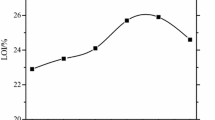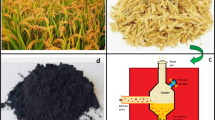Abstract
GLARE (glass fibre/epoxy reinforced aluminum laminate) is a member of the fiber metal laminate (FML) family, and is built up of alternating metal and fiber layers. About 500 m2 GLARE is employed in each Airbus A380 because of the superior mechanical properties over the monolithic aluminum alloys, such as weight reduction, improved damage tolerance and higher ultimate tensile strength. Many tons of new GLARE scraps have been accumulated during the Airbus A380 manufacturing. Moreover, with the increasing plane orders of Airbus A380, more and more end-of-life (EOL) GLARE scrap will be generated after retire of planes within forty years. Thermal processing is a potential method for the material recycling and re-use from GLARE with the aim of environmental protection and economic benefits. The current study indicatdes that thermal delamination is a crucial pre-treatment step for the GLARE recycling. The decomposition behavior of the epoxy resins at elevated temperatures was investigated by using the simultaneous thermal analysis, thermogravimetry analysis (TGA) and differential scanning calorimetry (DSC). Based on the thermal analysis results, GLARE thermal delamination experiments at refined temperatures were carried out to optimize the treatment temperature and holding time.
Similar content being viewed by others
References
Vlot A, Gunnink J W. Fibre metal laminates: An introduction [M]. Dordrecht: Kluwer Academic Publishers, 2001.
FOKKER. GLARE [EB/OL]. (2011-09-08). http://www.fokker.com/Innovations-GLARE.
Pickering S J. Recycling technologies for thermoset composite materials-current status [J]. Composites Part A, 2006, 37(8): 1206–1215.
Pimenta S, Pinho S T. Recycling carbon fibre reinforced polymers for structural applications: Technology review and market outlook [J]. Waste Management, 2011, 31(2): 378–392.
Alderliesten R C, Homan J J. Fatigue and damage tolerance issues of GLARE in aircraft structures [J]. International Journal of Fatigue, 2006, 28(10): 1116–1123.
Jen M H R, Sung Y C, Lai Y D. Tensile and fatigue testings of hybrid Al/APC-2 nanocomposite laminates at elevated temperature [J]. Advanced Materials Research, 2008, 47–50: 592–595.
Author information
Authors and Affiliations
Corresponding authors
Additional information
Foundation item: the Royal Netherlands Academy of Science and Arts (KNAW) (No. 10CDP026), the National Outstanding Young Scientist Foundation of China (No. 50825401) and the National Natural Science Foundation of China (No. 50821003)
Rights and permissions
About this article
Cite this article
Zhu, Gl., Xiao, Yp., Yang, Yx. et al. Degradation behavior of epoxy resins in fibre metal laminates under thermal conditions. J. Shanghai Jiaotong Univ. (Sci.) 17, 257–262 (2012). https://doi.org/10.1007/s12204-012-1264-2
Received:
Published:
Issue Date:
DOI: https://doi.org/10.1007/s12204-012-1264-2
Key words
- fibre metal laminates
- GLARE (glass fibre/epoxy reinforced aluminum laminate)
- recycling
- decomposition kinetics
- thermal degradation




